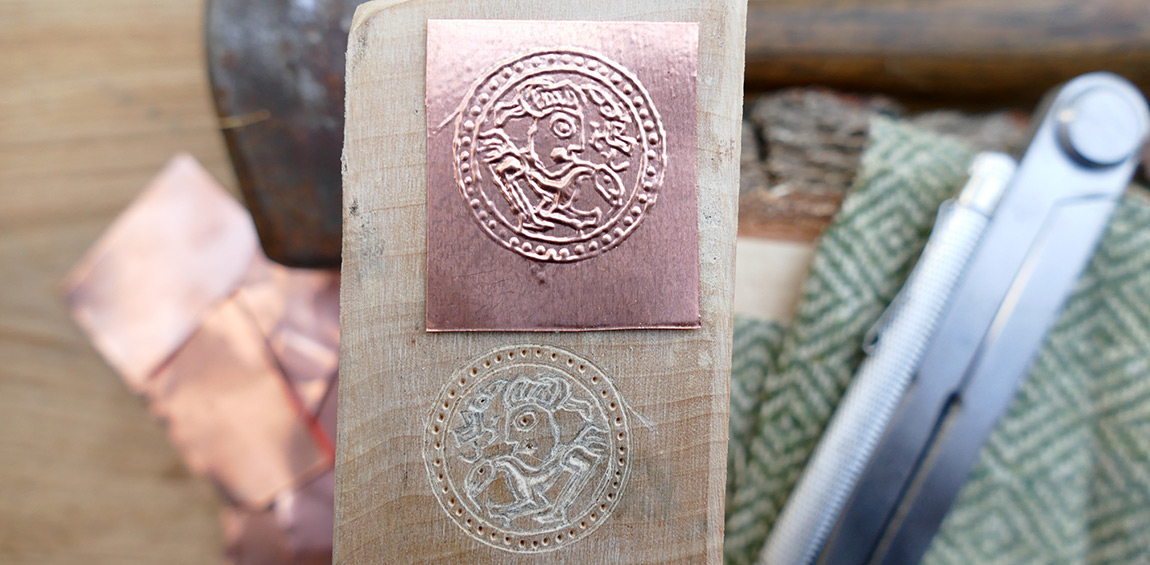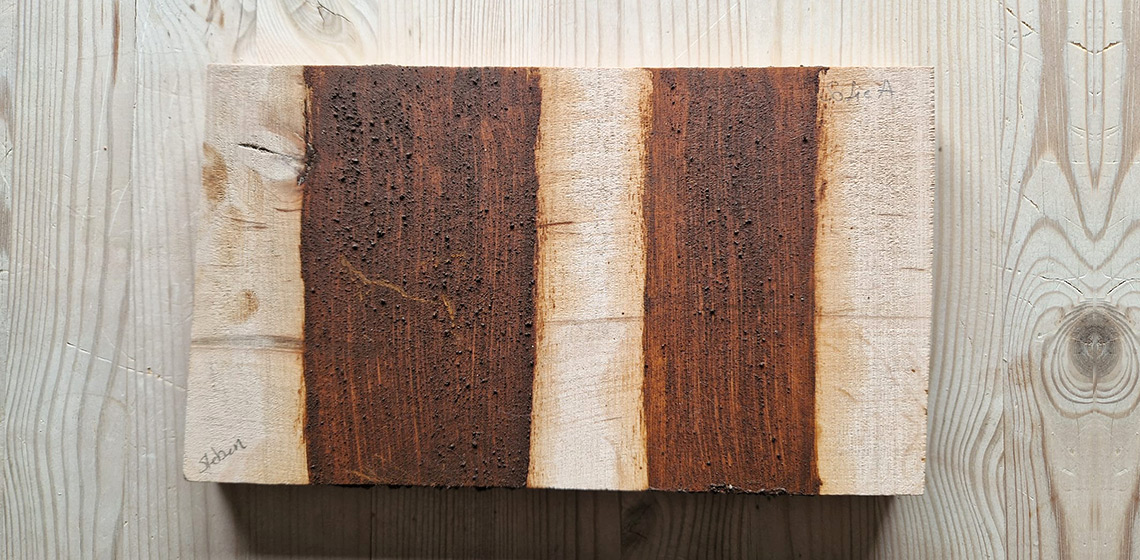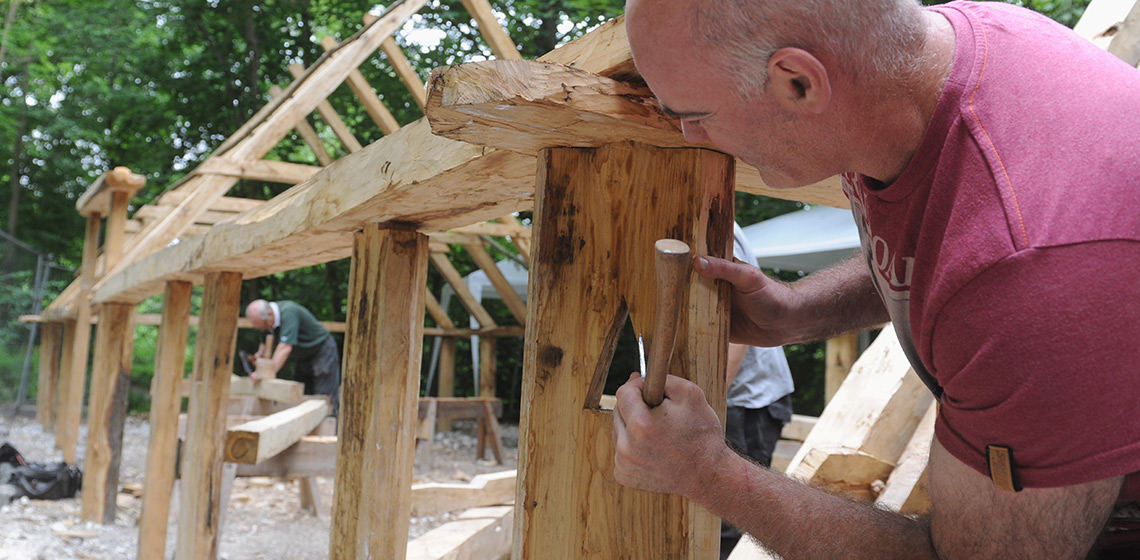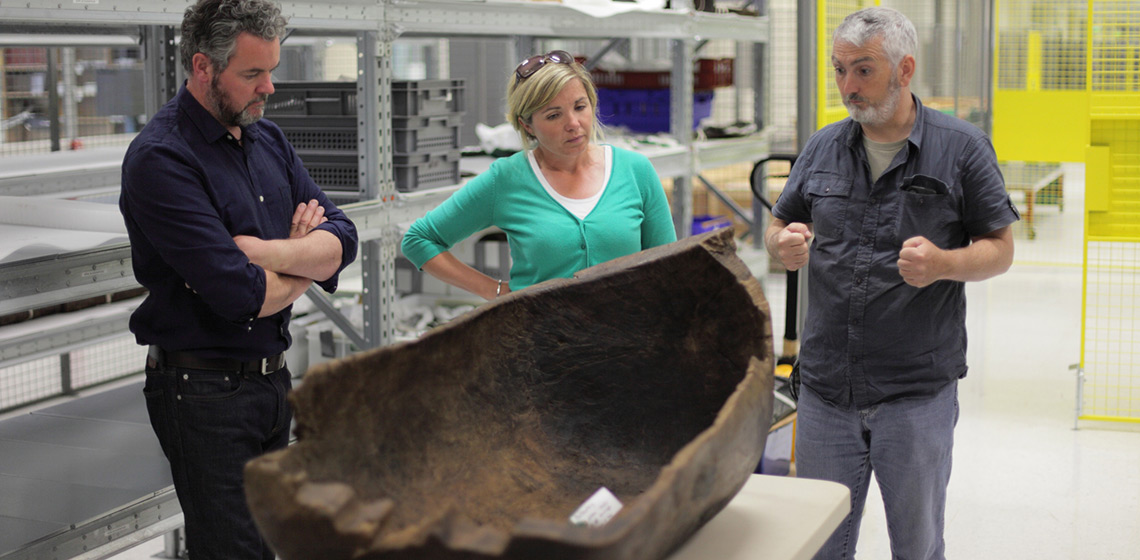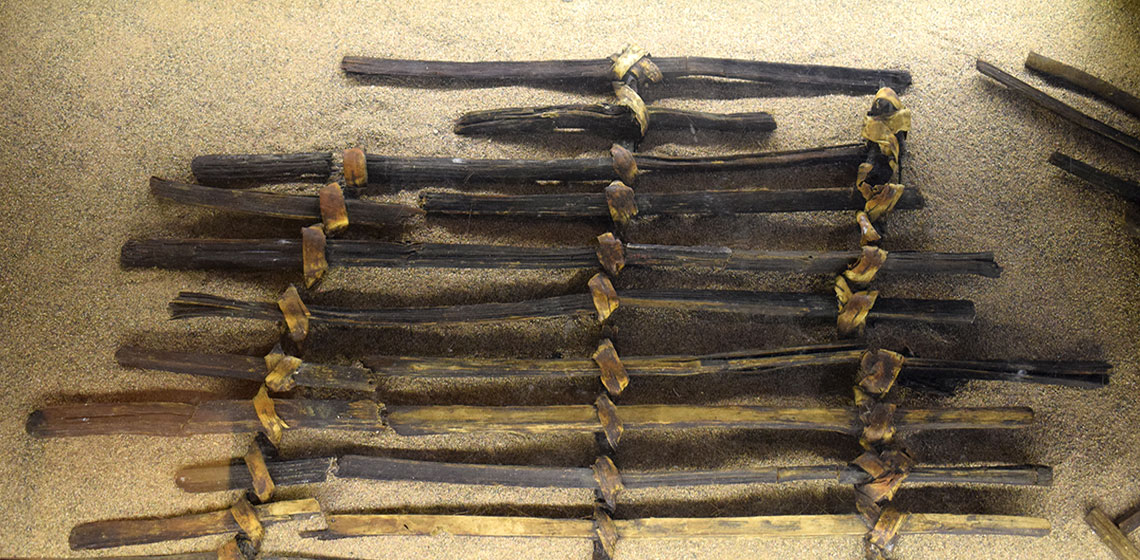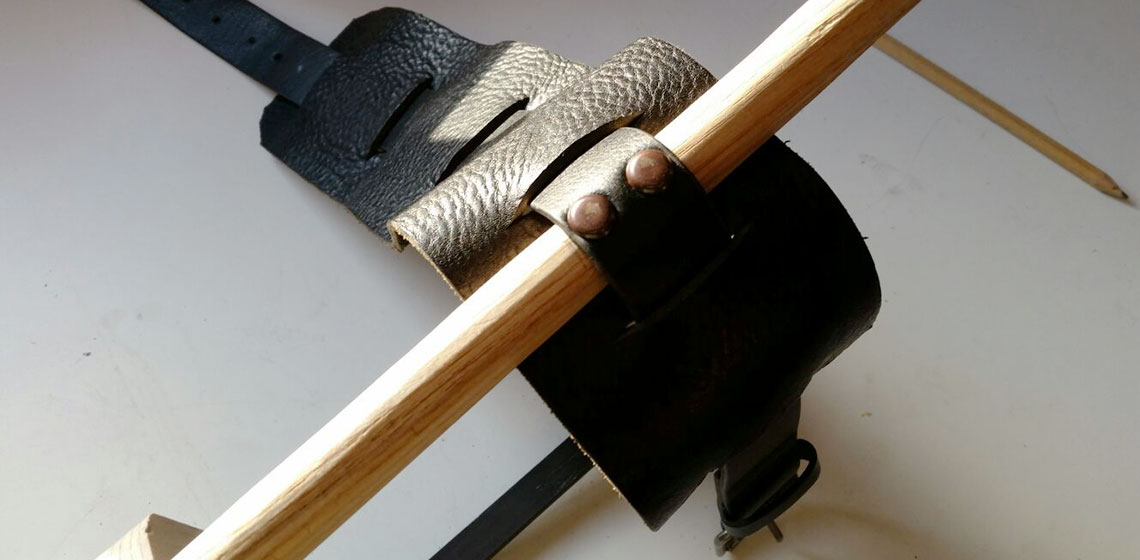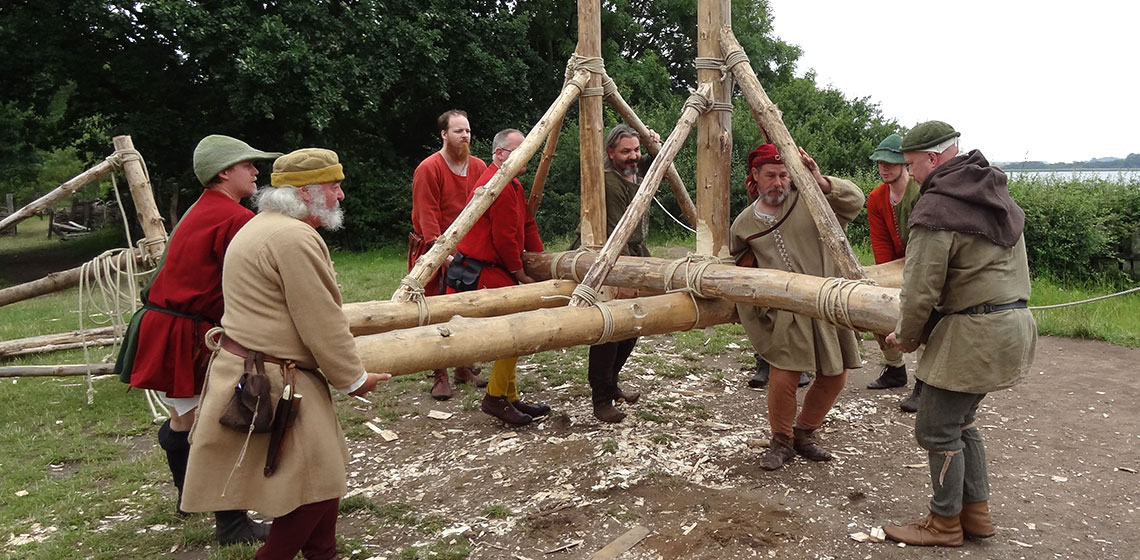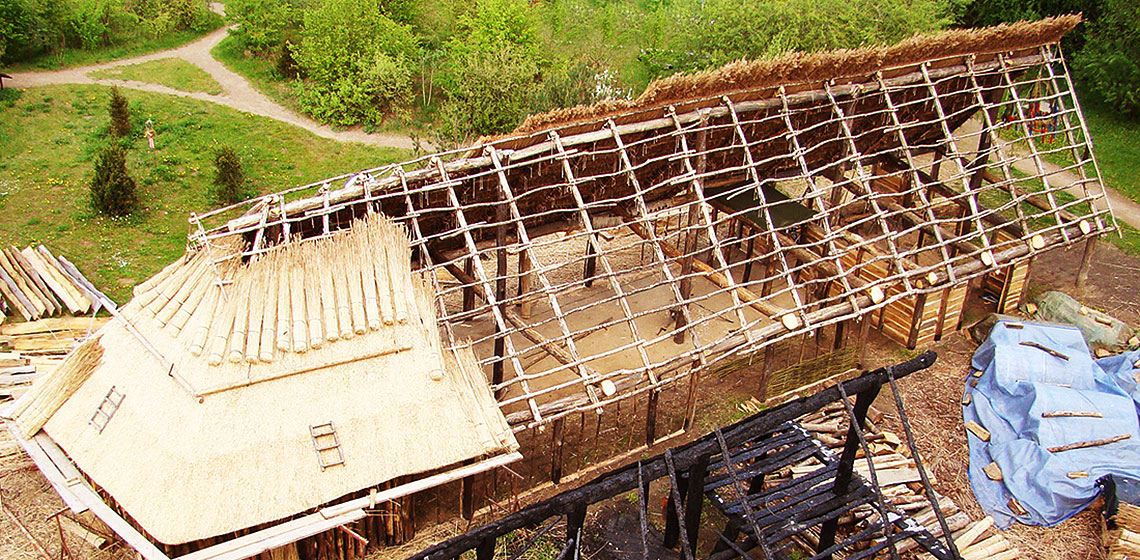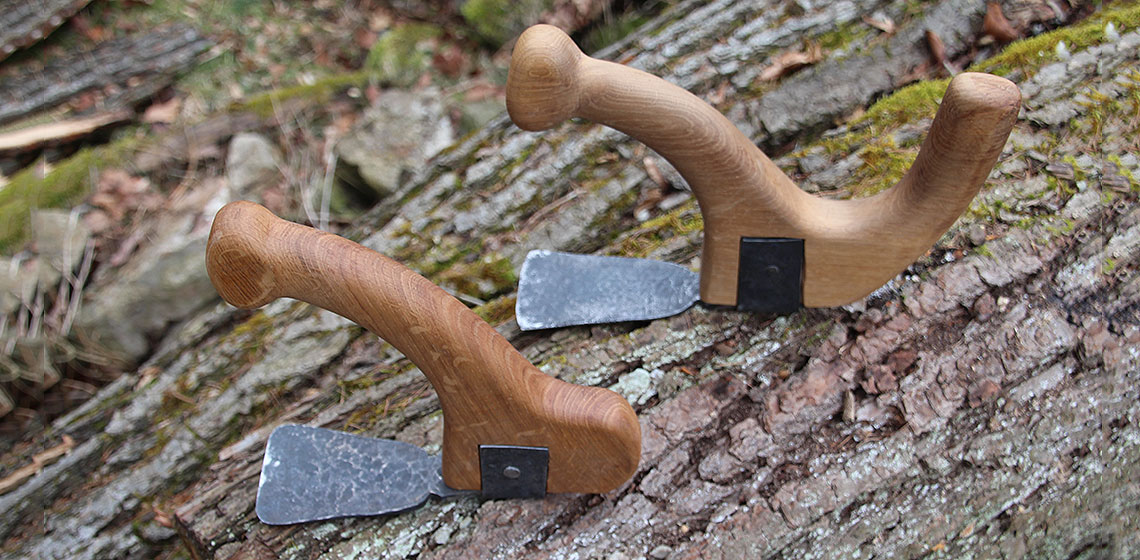woodworking
Wooden Matrices in Bracteate Production: An Experimental Approach
Publication Date
The literature on the production of Migration Period (c.400-550 AD) gold bracteates has suggested wood as a possible material to be used for the matrix on which bracteates are made, but only in the production of a single or very few bracteates. This study experiments with how such a matrix could have been made and what part of the wood could have been used. Additionally, it examines the quality changes in serial production...
Experiments on Painting Viking Age Woodwork
Publication Date
Traditionally, studies on Viking Age pigmentation have focused on the minerals used to produce colours. The research conducted in this article concerns other factors, that might have influenced painted wood such as surface treatments, outlines, and paint components...
The Weald & Downland Living Museum’s Saxon Hall
Publication Date
In the early days of the Weald & Downland Open Air Museum, from September 1970, there was a Saxon building on the site, which was one of only two archaeological reconstructions at the museum. This original sunken-floor Saxon building is no longer standing but, after several years in the planning, a new project saw the construction in 2015 of another Saxon building, the Saxon Hall from Steyning...
Making, Multi-Vocality and Experimental Archaeology: The Pallasboy Project
Publication Date
This paper outlines The Pallasboy Project, which set out to craft a replica of the eponymous Irish Iron Age wooden vessel. We consider the process and progress of the project, as it developed in a number of slightly unusual directions. The paper includes a description of the experimental work, alongside personal reflections and comments by...
The Construction of a Replica Section of the Middle Subneolithic Purkajasuo Lath Screen Fish Weir at Kierikki Stone Age Centre, Finland
Publication Date
In July 2018 the Mesolithic Resource Group attended the Kierikki Stone Age Centre, Pahkalantie, Finland. The visit provided us with the opportunity to practice experimental archaeology in a ‘Stone Age’ landscape at Kierikki. One project was the reconstruction of a section of the Neolithic wooden fish weir from the site of Purkajasuo, which is on display in the museum...
Experimental Reconstruction of a Nineteenth Century Lower Limb Prosthetic Peg Leg – The Box Leg
Publication Date
10th EAC Leiden 2017
***Scientific attempts to understand early prosthesis manufacturing techniques are rare. The academic research of artificial limbs has been limited to the historical analysis of documentary sources. This area still remains a fairly under-researched topic even under the more recent developments of disability studies (Childress, 1985)...
***Scientific attempts to understand early prosthesis manufacturing techniques are rare. The academic research of artificial limbs has been limited to the historical analysis of documentary sources. This area still remains a fairly under-researched topic even under the more recent developments of disability studies (Childress, 1985)...
Traction Trebuchet
Publication Date
The trebuchet, in all its forms, was very much in vogue in the reenactment and research community in the 1980s and 1990s. Several museums around the world have also built their own, with Middelaldercenteret in Nykøbing Falster in Denmark as one of the first modern examples of counterweight trebuchet (Hansen, 1989). Despite the multitude of builds, very little has been published about...
The Construction of a Bronze Age Longhouse Model in Dwelling-byre Style using Experimental Archaeological Techniques
Publication Date
Longhouses built using earth-fast post technique belong to the most important and most successful house types of middle European prehistory. The footprints of these structures, in various styles, are identifiable from the very beginning of the Neolithic period up to the Middle Ages, and sometimes up to early modern times...
The Experimental Building of a Wooden Watchtower in the Carolingian Southern Frontier
Publication Date
10th EAC Leiden 2017
***During fifteen days of June 2015, the team of l’Esquerda worked in a research project to build a Carolingian wooden watchtower on the River Ter, in Roda de Ter, Catalonia, Spain. The idea was to test our hypotheses experimentally, (a) if the wooden watchtower could...
***During fifteen days of June 2015, the team of l’Esquerda worked in a research project to build a Carolingian wooden watchtower on the River Ter, in Roda de Ter, Catalonia, Spain. The idea was to test our hypotheses experimentally, (a) if the wooden watchtower could...
Adze-plane, Skeparnon, Multipurpose Adze or Two-handled Adze? Practical Work with an Alleged Predecessor of the Woodworking Plane
Publication Date
10th EAC Leiden 2017
***This article presents a practical approach to a Graeco-Roman woodworking tool called “ascia-Hobel” in the archaeological literature, respectively “adze-plane” as the corresponding English term. The tool in question consists of an often semi-circular adze-blade attached to a two-handled shaft and seems to be suited both for chopping and...
***This article presents a practical approach to a Graeco-Roman woodworking tool called “ascia-Hobel” in the archaeological literature, respectively “adze-plane” as the corresponding English term. The tool in question consists of an often semi-circular adze-blade attached to a two-handled shaft and seems to be suited both for chopping and...

